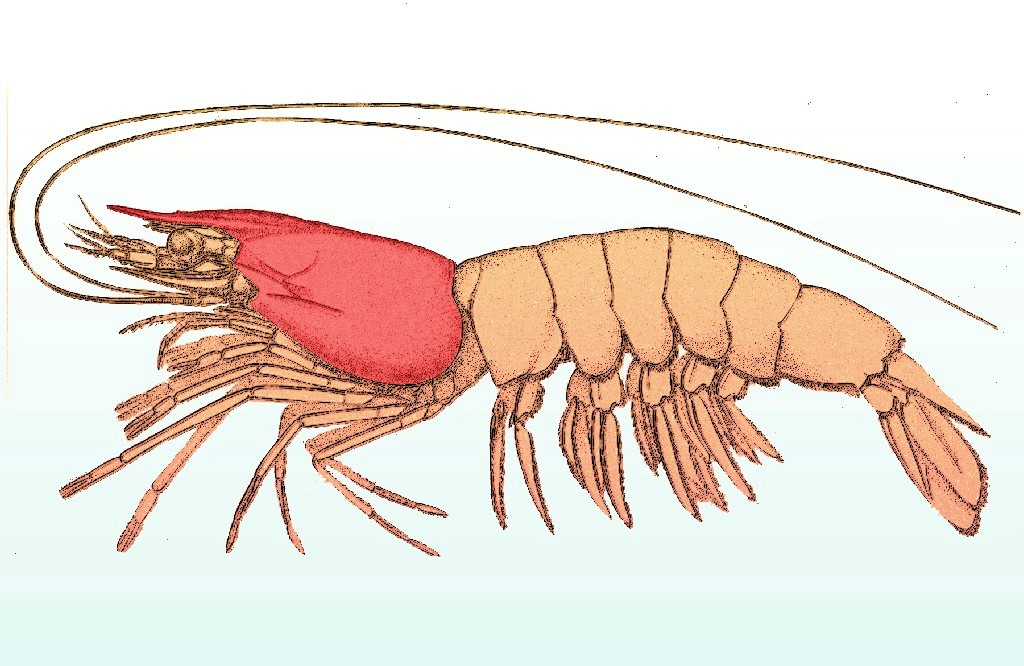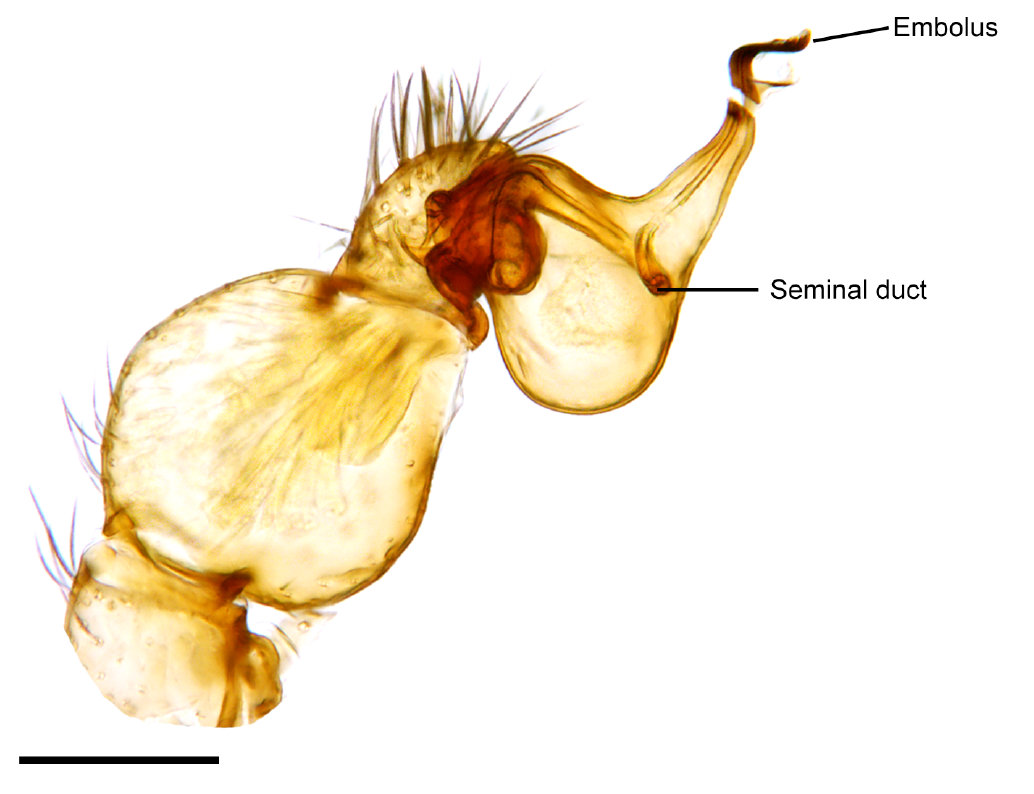|
Parbatthorax
''Parbatthorax'' is a small genus of Asian sheet weavers first described by A. V. Tanasevitch in 2019. it contains only two species: '' P. proiectus'' and '' P. unicornis''. Its appearance resembles members of ''Gongylidioides'' and ''Glebala'', but it can be distinguished by the unique shape of its carapace and a highly modified palpal tibia and paracymbium. The genus name is a combination of the Parbat District, where the first specimen was found, and the "thorax", whose unique shape is one of its distinguishing factors. See also * List of Linyphiidae species (I–P) This page lists all described species of the spider family Linyphiidae as of July 12, 2020, from I to P, of World Spider Catalog version 21.0 ''Ibadana'' ''Ibadana'' Locket & Russell-Smith, 1980 * '' Ibadana cuspidata'' Locket & Russell-Smith, ... References Further reading * Linyphiidae genera Spiders of Asia {{Linyphiidae-stub ... [...More Info...] [...Related Items...] OR: [Wikipedia] [Google] [Baidu] |
Linyphiidae
Linyphiidae, spiders commonly known as sheet weavers (from the shape of their webs), or money spiders (in the United Kingdom, Ireland, Australia, New Zealand, and in Portugal, from the superstition that if such a spider is seen running on you, it has come to spin you new clothes, meaning financial good fortune) is a family of very small spiders comprising 4706 described species in 620 genera worldwide. This makes Linyphiidae the second largest family of spiders after the Salticidae. The family is poorly understood due to their small body size and wide distribution, new genera and species are still being discovered throughout the world. The newest such genus is ''Himalafurca'' from Nepal, formally described in April 2021 by Tanasevitch. Since it is so difficult to identify such tiny spiders, there are regular changes in taxonomy as species are combined or divided. * Money spiders are known for drifting through the air via a technique termed “ballooning”. * Within the agricult ... [...More Info...] [...Related Items...] OR: [Wikipedia] [Google] [Baidu] |
Genus
Genus ( plural genera ) is a taxonomic rank used in the biological classification of extant taxon, living and fossil organisms as well as Virus classification#ICTV classification, viruses. In the hierarchy of biological classification, genus comes above species and below family (taxonomy), family. In binomial nomenclature, the genus name forms the first part of the binomial species name for each species within the genus. :E.g. ''Panthera leo'' (lion) and ''Panthera onca'' (jaguar) are two species within the genus ''Panthera''. ''Panthera'' is a genus within the family Felidae. The composition of a genus is determined by taxonomy (biology), taxonomists. The standards for genus classification are not strictly codified, so different authorities often produce different classifications for genera. There are some general practices used, however, including the idea that a newly defined genus should fulfill these three criteria to be descriptively useful: # monophyly – all descendants ... [...More Info...] [...Related Items...] OR: [Wikipedia] [Google] [Baidu] |
Gongylidioides
''Gongylidioides'' is a genus of Asian Linyphiidae, dwarf spiders that was first described by R. Oi in 1960. Species it contains eighteen species, found in China, India, Japan, Korea, Malaysia, Russia, Taiwan, and Vietnam: *''Gongylidioides acmodontus'' Tu & Li, 2006 – China *''Gongylidioides angustus'' Tu & Li, 2006 – Taiwan *''Gongylidioides communis'' Saito & Ono, 2001 – Japan *''Gongylidioides cucullatus'' Oi, 1960 (Type species, type) – Japan *''Gongylidioides diellipticus'' Song & Li, 2008 – Taiwan *''Gongylidioides foratus'' (Ma & Zhu, 1990) – China *''Gongylidioides galeritus'' Saito & Ono, 2001 – Japan *''Gongylidioides griseolineatus'' (Schenkel, 1936) – Russia (Far East), China *''Gongylidioides kaihotsui'' Saito & Ono, 2001 – Japan, Korea *''Gongylidioides keralaensis'' Tanasevitch, 2011 – India *''Gongylidioides kouqianensis'' Tu & Li, 2006 – China *''Gongylidioides lagenoscapis'' Yin, 2012 – China *''Gongylidioides monocornis'' Saito & Ono, 2 ... [...More Info...] [...Related Items...] OR: [Wikipedia] [Google] [Baidu] |
Glebala
''Glebala'' is a genus of spiders in the family Linyphiidae. It was first described in 2014 by Zhao & Li. , it contains only one species, ''Glebala aspera'', found in China. References Linyphiidae Monotypic Araneomorphae genera Spiders of China {{Linyphiidae-stub ... [...More Info...] [...Related Items...] OR: [Wikipedia] [Google] [Baidu] |
Carapace
A carapace is a Dorsum (biology), dorsal (upper) section of the exoskeleton or shell in a number of animal groups, including arthropods, such as crustaceans and arachnids, as well as vertebrates, such as turtles and tortoises. In turtles and tortoises, the underside is called the plastron. Crustaceans In crustaceans, the carapace functions as a protective cover over the cephalothorax (i.e., the fused head and thorax, as distinct from the abdomen behind). Where it projects forward beyond the eyes, this projection is called a rostrum (anatomy), rostrum. The carapace is Calcification, calcified to varying degrees in different crustaceans. Zooplankton within the phylum Crustacea also have a carapace. These include Cladocera, ostracods, and Isopoda, isopods, but isopods only have a developed "cephalic shield" carapace covering the head. Arachnids In arachnids, the carapace is formed by the fusion of prosomal tergites into a single Plate (animal anatomy), plate which carries the e ... [...More Info...] [...Related Items...] OR: [Wikipedia] [Google] [Baidu] |
Pedipalp
Pedipalps (commonly shortened to palps or palpi) are the second pair of appendages of chelicerates – a group of arthropods including spiders, scorpions, horseshoe crabs, and sea spiders. The pedipalps are lateral to the chelicerae ("jaws") and anterior to the first pair of walking legs. Overview Pedipalps are composed of six segments or articles: the coxa, the trochanter, the femur, the short patella, the tibia, and the tarsus. In spiders, the coxae frequently have extensions called maxillae or gnathobases, which function as mouth parts with or without some contribution from the coxae of the anterior legs. The limbs themselves may be simple tactile organs outwardly resembling the legs, as in spiders, or chelate weapons ( pincers) of great size, as in scorpions. The pedipalps of Solifugae are covered in setae, but have not been studied in detail. Comparative studies of pedipalpal morphology may suggest that leg-like pedipalps are primitive in arachnids. At present, the only ... [...More Info...] [...Related Items...] OR: [Wikipedia] [Google] [Baidu] |
Arthropod Leg
The arthropod leg is a form of jointed appendage of arthropods, usually used for walking. Many of the terms used for arthropod leg segments (called podomeres) are of Latin origin, and may be confused with terms for bones: ''coxa'' (meaning hip, plural ''coxae''), ''trochanter'', ''femur'' (plural ''femora''), ''tibia'' (plural ''tibiae''), ''tarsus'' (plural ''tarsi''), ''ischium'' (plural ''ischia''), ''metatarsus'', ''carpus'', ''dactylus'' (meaning finger), ''patella'' (plural ''patellae''). Homologies of leg segments between groups are difficult to prove and are the source of much argument. Some authors posit up to eleven segments per leg for the most recent common ancestor of extant arthropods but modern arthropods have eight or fewer. It has been argued that the ancestral leg need not have been so complex, and that other events, such as successive loss of function of a ''Hox''-gene, could result in parallel gains of leg segments. In arthropods, each of the leg segments ar ... [...More Info...] [...Related Items...] OR: [Wikipedia] [Google] [Baidu] |
Parbat District
Parbat District ( ne, :ne:पर्वत जिल्ला, पर्वत जिल्ला , is a hilly area of Nepal. It is a part of Gandaki Province and one of the seventy-seven districts of Nepal. The district, with Kusma, Nepal, Kusma as its district headquarters, covers an area of and has a population (2001) of 157,826. It is the fourth smallest district of Nepal with 47 VDCs currently (before Kushma Municipality was formed, total VDCs remained 55.). It is mainly known for the Gupteswar Cave, Gupteshwar Cave, which is visited by thousands of pilgrims during Maha Shivaratri, Shivaratri. Patheshwari Temple a notable temple in Kushma located at Katuwa Chaupari of Kushma-09. Patheshwori Mandir has many sub-temples inside like Ram Janaki Mandir, Bhagwati, Devi, Hanuman, and others. Alapeshwar cave is a cave in this district. It is also noted for the Dahere Deurali Temple, which is visited by thousands of pilgrims during Bala Chaturdashi. Kamadhenu Mandir is another temple ... [...More Info...] [...Related Items...] OR: [Wikipedia] [Google] [Baidu] |
List Of Linyphiidae Species (I–P)
This page lists all described species of the spider family Linyphiidae as of July 12, 2020, from I to P, of World Spider Catalog version 21.0 ''Ibadana'' ''Ibadana'' Locket & Russell-Smith, 1980 * '' Ibadana cuspidata'' Locket & Russell-Smith, 1980 – Nigeria, Cameroon ''Iberoneta'' '' Iberoneta'' Deeleman-Reinhold, 1984 * '' Iberoneta nasewoa'' Deeleman-Reinhold, 1984 – Spain ''Icariella'' ''Icariella'' Brignoli, 1979 * '' Icariella hauseri'' Brignoli, 1979 – Greece ''Idionella'' '' Idionella'' Banks, 1893 * '' Idionella anomala'' (Gertsch & Ivie, 1936) – USA * '' Idionella deserta'' (Gertsch & Ivie, 1936) – USA * '' Idionella formosa'' (Banks, 1892) ( type species) – USA ** ''Idionella formosa pista'' (Chamberlin, 1949) – USA * '' Idionella nesiotes'' (Crosby, 1924) – USA * '' Idionella rugosa'' (Crosby, 1905) – USA * '' Idionella sclerata'' (Ivie & Barrows, 1935) – USA, Mexico * '' Idionella titivillitium'' (Crosby & Bishop, 1925) – USA * '' Idionella ... [...More Info...] [...Related Items...] OR: [Wikipedia] [Google] [Baidu] |



